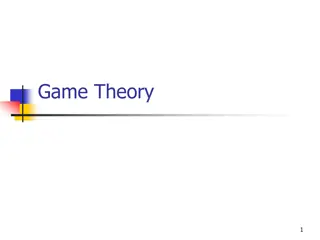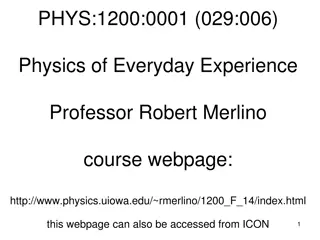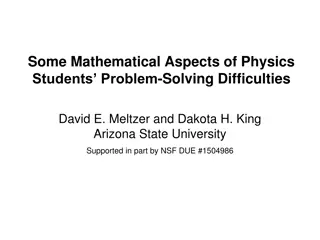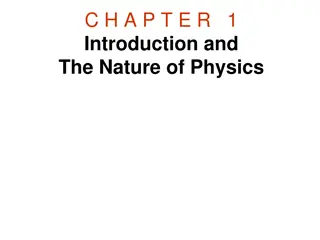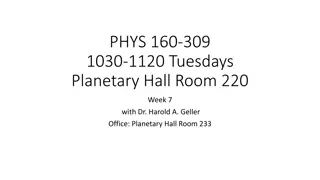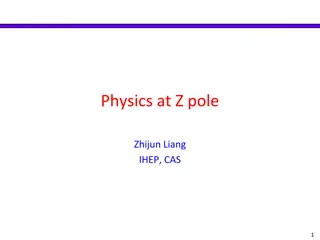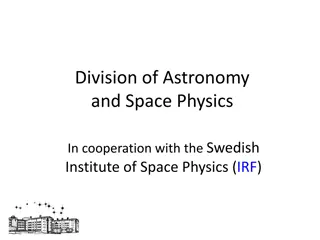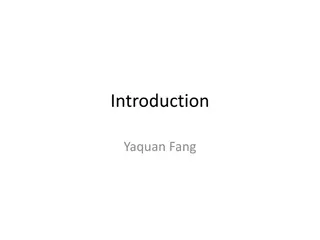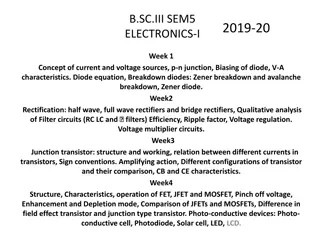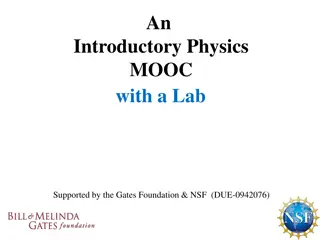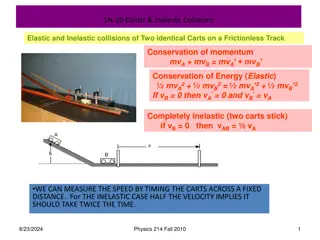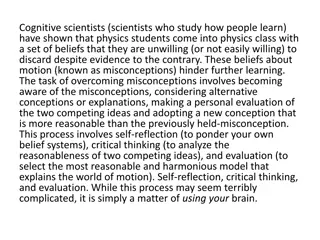Understanding Equilibriums in Physics
Equilibrium in physics refers to the state of a body where there is no change in translational or rotational motion. This state can be classified into static equilibrium (when total force and torque are zero) and dynamic equilibrium (when a body is in uniform motion with zero resultant force and torque). Different types of equilibrium include stable (body returns to normal position on displacement), neutral (body stays at rest on displacement), and unstable (body does not return to normal position on displacement).
Download Presentation

Please find below an Image/Link to download the presentation.
The content on the website is provided AS IS for your information and personal use only. It may not be sold, licensed, or shared on other websites without obtaining consent from the author. Download presentation by click this link. If you encounter any issues during the download, it is possible that the publisher has removed the file from their server.
E N D
Presentation Transcript
DR. RAJESH PRATAP SINGH ASSOCIATE PROFESSOR PHYSICAL EDUCATION CSJM UNIVERSITY CAMPUS , KANPUR Equilibrium
EQUILIBRIUM No net force act on it. A body is said to be in translational equilibrium if the sum of all the forces acting on the body is zero A system is said to be in equilibrium if it does not tend to undergo any further change of its own. The state of a body or physical system at rest or in un accelerated motion in which the resultant of all forces acting on it is zero and the sum of all torques about any axis is zero.
What is Equilibrium A rigid body is supposed to be in equilibrium if there is no change in translational motion and no change in rotational motion. General conditions for equilibrium are as follows (i) The total force must be zero (ii) The total torque about any axis must be zero. Sometimes it is convenient to consider torques about axes through the centre of gravity. Types of equilibrium We can divide the equilibrium into two categories with respect to the state of a body 1. Static equilibrium. 2. Dynamic equilibrium.
Static equilibrium If the total force and total torque on the body are zero and the body is in the state of rest then its equilibrium is termed as static equilibrium. For example All stationary bodies Dynamic equilibrium when a body is in a state of uniform motion and the resultant total force and total torque on the body are zero then it is said to be in dynamic equilibrium.
WHATARE 3 TYPESOF EQULBRIUM Stable Equilibrium Neutral Equilibrium Unstable Equilibrium
Stable Equilibrium: A body is in stable equilibrium if it comes back to its normal position on slight displacement Examples (1) A ball in the valley between two hills. a small displacement of the ball toward either side will result in a force returning the ball to the original position. Thus the equilibrium is stable (2)A book lying on a horizontal surface is an example of stable equilibrium. If the book is lifted from one edge and then allowed to fall, it will come back to its original position (3) A cone with a flat surface on the horizontal floor. If the clone is tilted slightly, it comes back to its normal position Neutral equilibrium: If a ball is pushed slightly to roll, it will neither come back to its original nor it will roll forward rather it will remain at rest. Examples: (1) A ball on a flat surface. A small displacement will not have any impact on the ball.
Unstable equilibrium: A body is in unstable equilibrium if it does comes back to its normal position on slight displacement Example (1) pencil standing on its point or a stick in vertically standing position. (2) thin rod standing vertically is slightly disturbed from its position it will not come back to its original position. (3) Vertically standing cylinder (4) A ball at the top of a rounded hill . A small displacement of the ball results in a force that moves the ball away from the equilibrium point so that equilibrium cannot be maintained.
CONDITIONSOFEQUILIBRIUM Conditions for equilibrium require that the sum of all external forces acting on the body is zero (first condition of equilibrium), and the sum of all external torques from external forces is zero (second condition of equilibrium). These two conditions must be simultaneously satisfied in equilibrium








